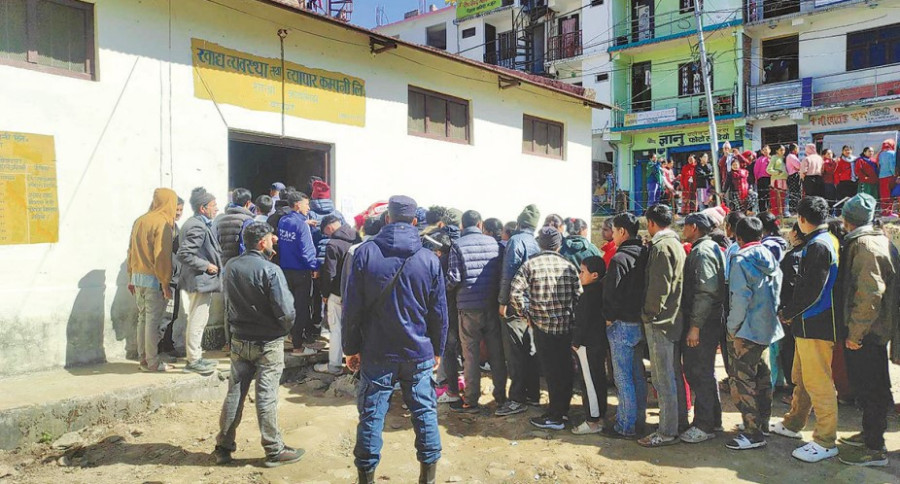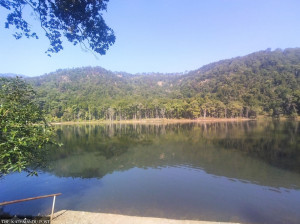Sudurpaschim Province
Bajura sells food grains, but reels under rice shortage
Experts attribute growing preference among the district residents for rice over local crops as one of the factors for the scarcity
Arjun Shah
The Food Management and Trading Company (FMTC) in Bajura had a tough time on Sunday after locals in large numbers gathered at its depot in Martadi to buy subsidised rice. “We had to get police help to control the crowd. We had 300 quintals of ‘Mota’ rice in stock. All the rice was sold out in a day,” said Umesh Bhandari, chief at the FMTC Bajura branch. Despite distributing 25 kg per person, the FMTC could sell rice to only about 1,000 people. Hundreds others had to return empty-handed.
Bajura, a hill district in Sudurpaschim Province, has a chronic shortage of white rice which is mainly produced in the Tarai region. However, the district exports a good amount of indigenous food grains including maize and millet.
“It is unfortunate to see people scrambling for rice by ignoring the local indigenous crops that grow in abundance,” said Min Prasad Jaishi, chief of Agriculture Knowledge Centre in Bajura. According to the centre, Bajura exports millet, maize, beans, buckwheat, and soya beans, among other crops, to other parts of the country and to India as well.
According to the data available at the Agriculture Knowledge Centre, a total of 2,200 quintals of millet worth Rs 6.6 million and around 500 quintals of maize worth around Rs1.5 million were exported from Bajura in the current fiscal year of 2023-24. Similarly, 250 quintals of bean worth Rs 3.7 million, 200 quintals of soya bean and 100 quintals of buckwheat were exported from the district.
Bajura exports fruits and vegetables as well. Around 200 quintals of apple worth Rs2 million; 1,000 quintals of potatoes of total Rs3 million cost and more than 2,000 quintals of cabbage worth approximately Rs500,000 were exported in the first seven months of the current fiscal year.
In recent years the local people have changed their food habits and consumption pattern. “People prefer white rice to indigenous food grains. Eating rice has been a matter of prestige. People used to eat millet, maize, potato and bean in the past. But now we are entirely dependent on imported rice,” said Tekendra Bahadur Singh of Bajura, who has been advocating for the consumption and production of indigenous crops. “People hardly eat maize now. Maize is used to feed mules, goats and other animals. Even barley is not used for food in the district now,” he added.
Bajura has very little land to grow paddy. People are discouraged from producing other local crops like millet, maize, bean, buckwheat, barley, kaguno (foxtail millet) and quinoa. “Consuming other local food grains except rice is considered as the social indicator of poverty. Local farmers are discouraged from producing indigenous crops. Hectares of arable land have been left fallow in the district in recent years,” said an employee at the Agriculture Knowledge Centre.
Bajura has seen a shift towards cultivating indigenous crops, mainly millet, after the UN General Assembly declared 2023 as the International Year of Millets. This designation has opened up new market opportunities for millets in Bajura, prompting farmers to increase millet production.
“Bajura produced millets in the past as well. The produced millets are on the market now. The traders including some Indians reached the villages to buy millets,” said Jaishi, adding, “The extended road networks in the rural areas also helped for the millet marketing.”
Bajura imports a huge quantity of rice. According to the Agriculture Knowledge Centre, Bajura imports around 60,000 quintals of rice annually. Around 20,000 quintals of rice is distributed by the FMTC while the private sector sells around 40,000 quintals. The Kolti area reels under shortage of food every year. Despite having high demand for subsidised rice, the FMTC is unable to supply rice as demanded in Bajura.




 12.12°C Kathmandu
12.12°C Kathmandu












